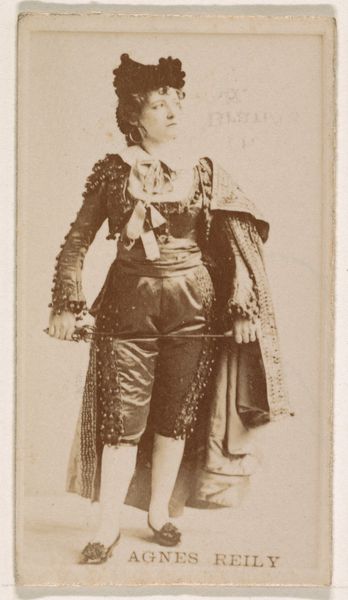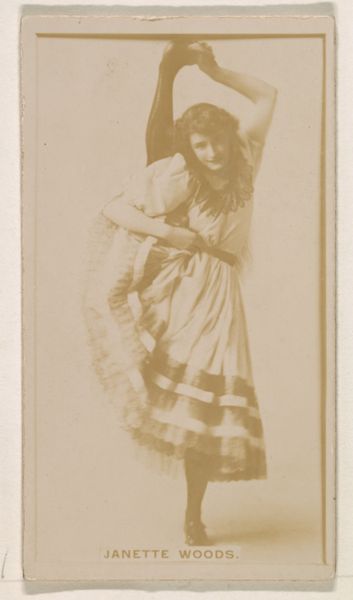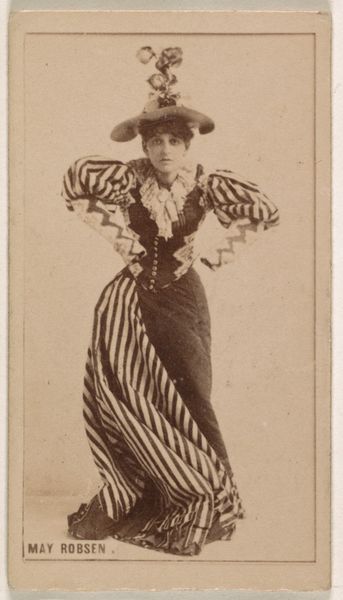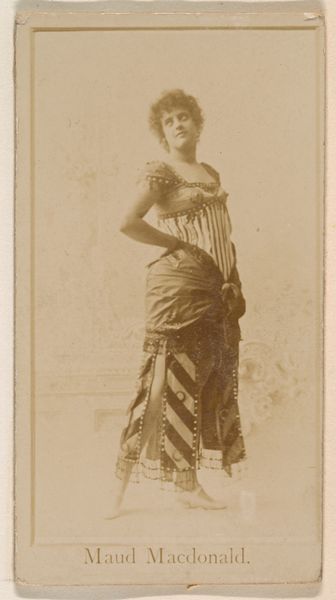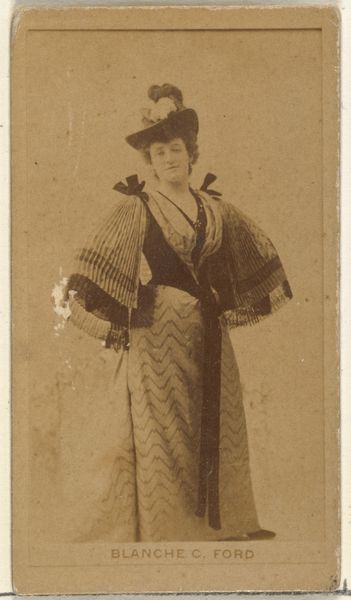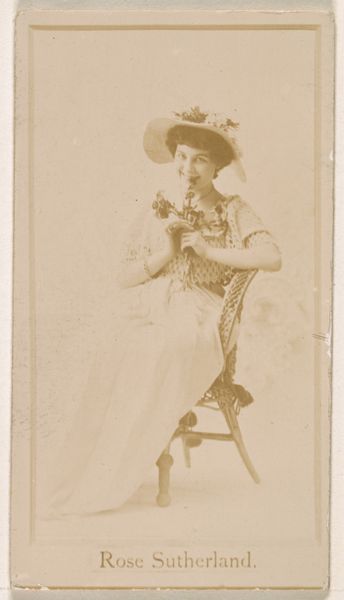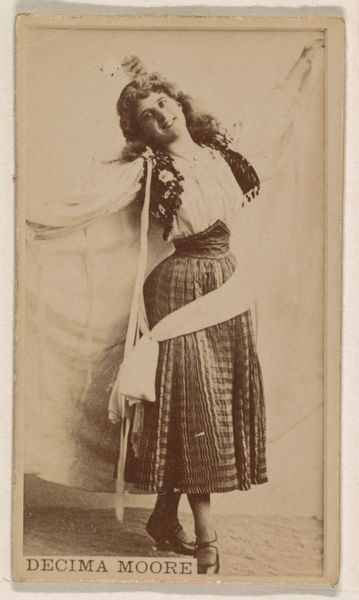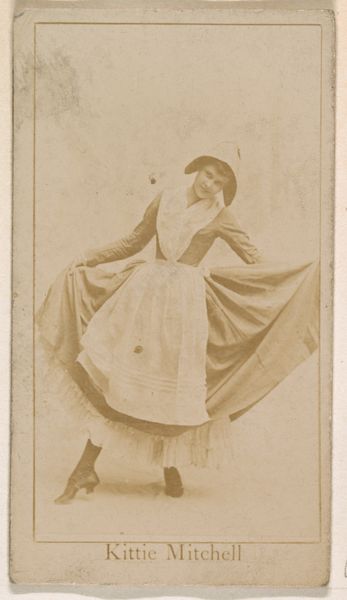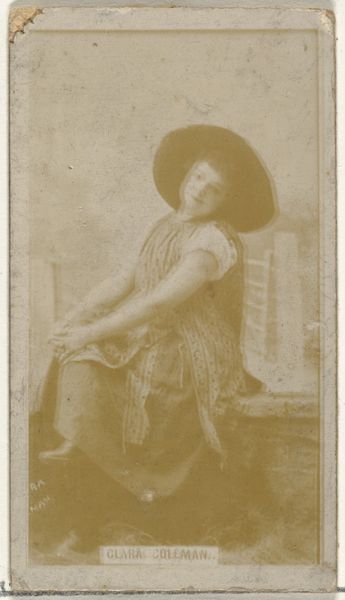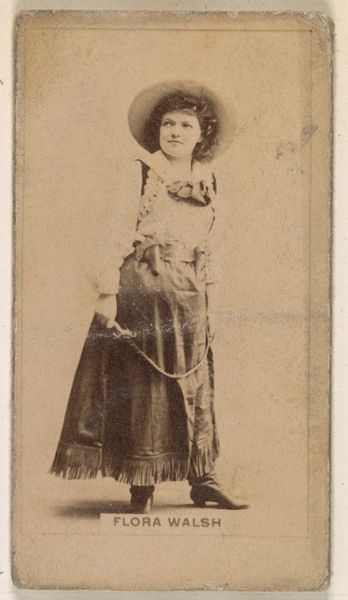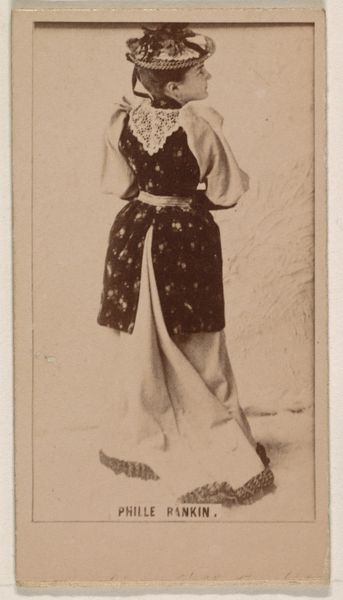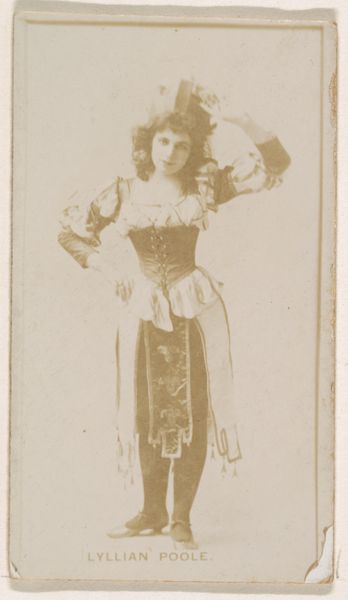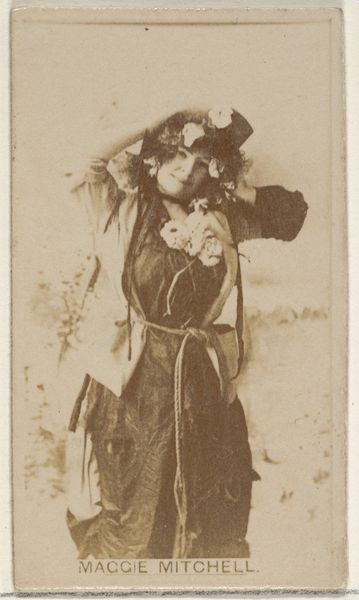
photography
#
portrait
#
photography
#
historical fashion
#
orientalism
Dimensions: image/sheet: 13.7 × 8.6 cm (5 3/8 × 3 3/8 in.)
Copyright: National Gallery of Art: CC0 1.0
Curator: This striking image is entitled "Portrait of a Woman," dating back to around 1910. It’s an intriguing piece of photography, capturing a particular style of the time. Editor: My first thought? Theatre! The bright colours, the posed stance… it all feels very performative, almost a tableau vivant frozen in time. Curator: That's interesting! The woman's dress is highly symbolic. The stripes and stars strongly evoke the American flag. How might this costuming play into the construction of identity within this image? Editor: That immediately suggests a consideration of patriotic symbolism and national identity. Considering the sociopolitical context of 1910, it may serve to address notions of liberty and belonging during a period of immigration and shifting national narratives. Curator: Absolutely. This could well be tapping into a powerful wave of early 20th-century American sentiment, perhaps reflecting ideas on women's roles within those burgeoning patriotic narratives. The "Portrait" prompts us to consider to what degree national identity may be consciously performative, like the creation of theatrical character. Editor: There’s a captivating tension between the formality of portraiture and the theatricality of the attire. Her slightly confrontational pose suggests agency, maybe even defiance, given the restrictive expectations often placed upon women then. She dares to challenge prevailing orthodoxies of demure, passive feminine presentation. Curator: Precisely! And consider this "Orientalist" inflection alongside the flag-based costume; what broader commentary does this pose yield for the politics of American identity? And for whom does she stand as symbol or allegory? The interplay invites inquiry into nationalism, gender roles and broader intersections of American cultural expression. Editor: Definitely! By viewing the artwork within its historical context and incorporating ideas about performativity and resistance, we’re beginning to expose layered meanings within what seemed, initially, to be just a simple portrait. Curator: These old images offer potent possibilities for contemporary audiences to engage with the past critically, revealing rich threads of sociocultural meaning in this artwork that are relevant for reflection today.
Comments
No comments
Be the first to comment and join the conversation on the ultimate creative platform.
